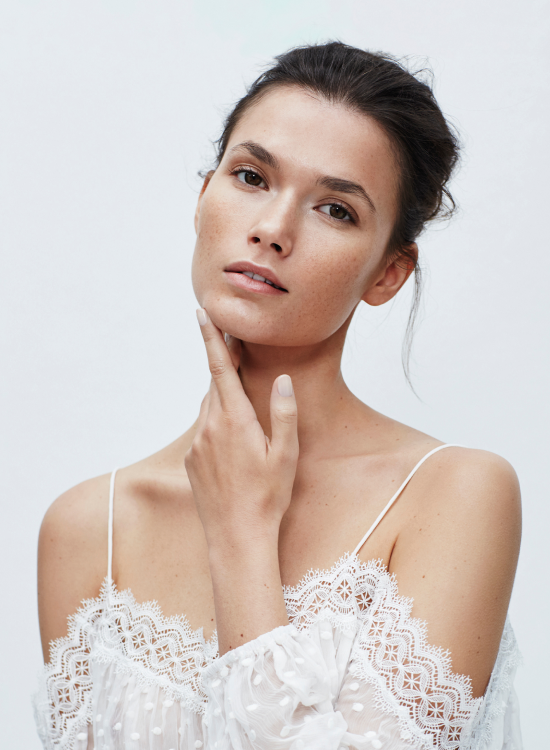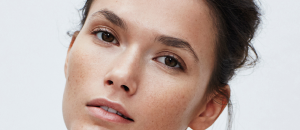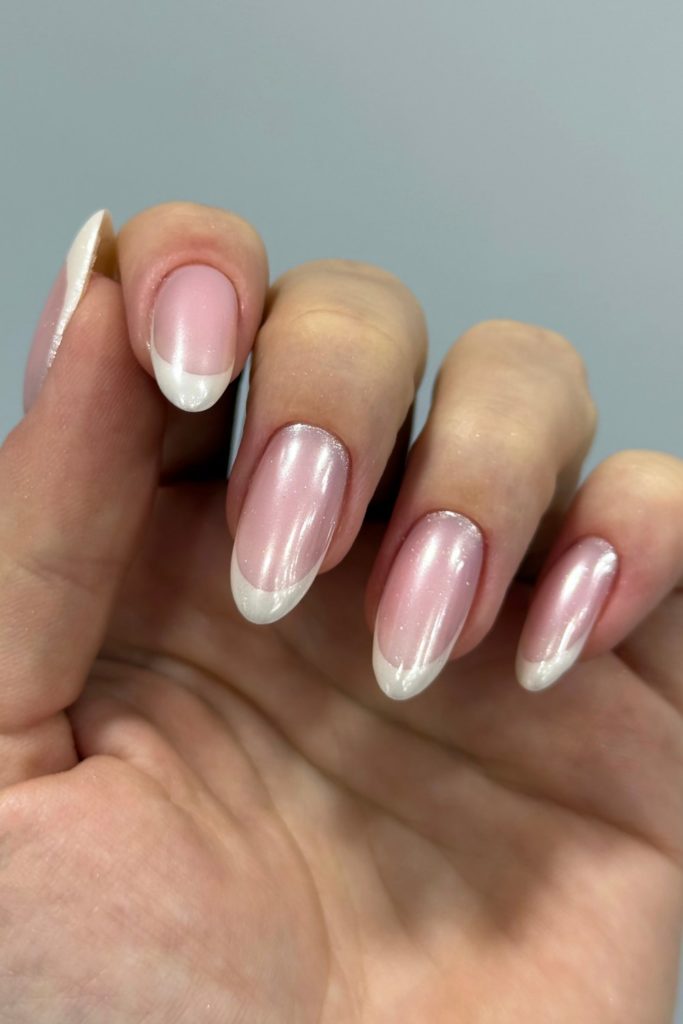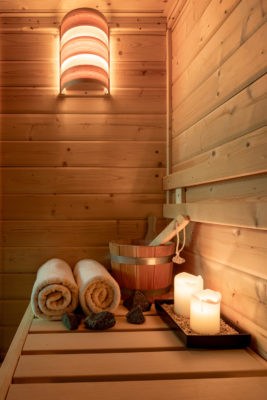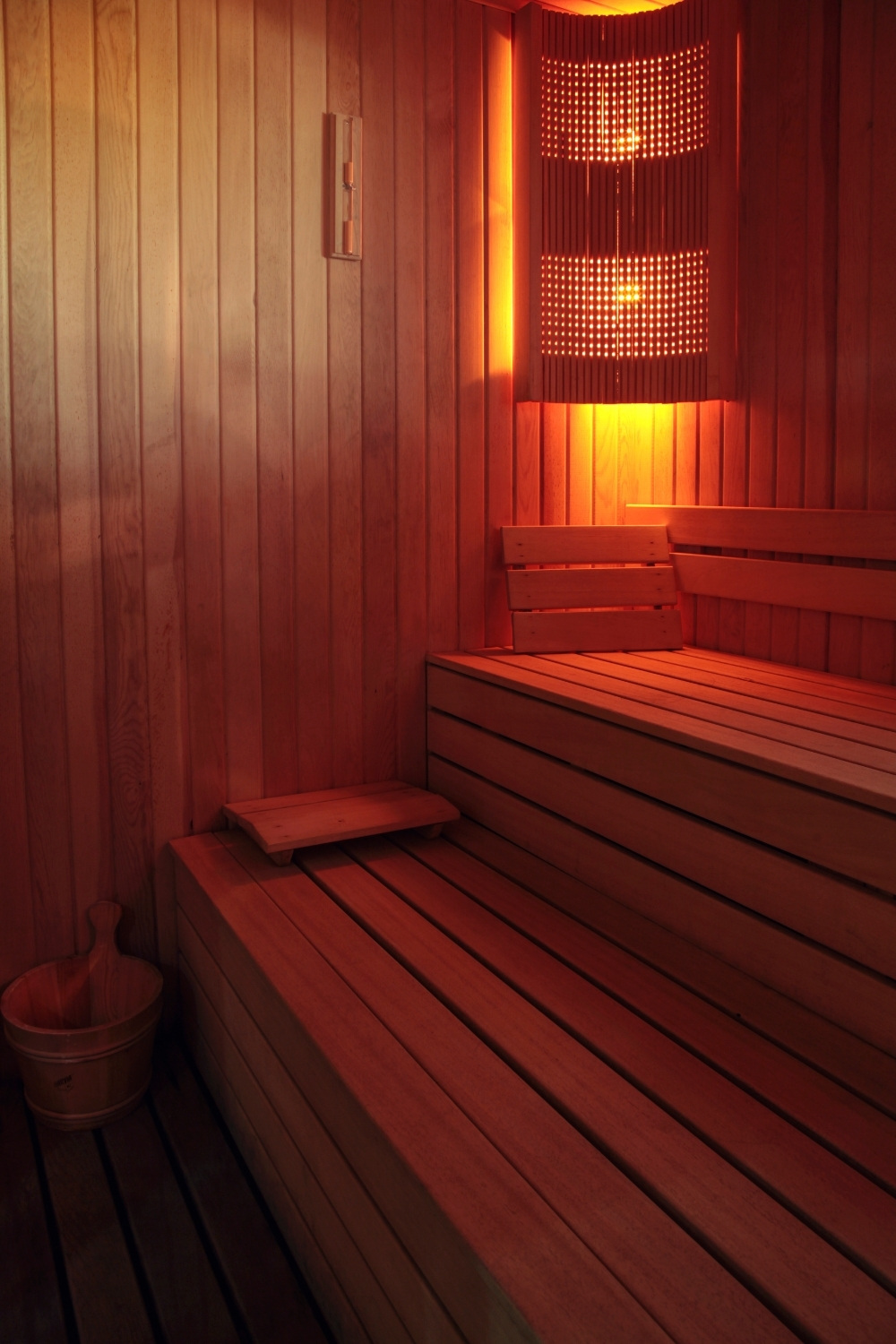
10 Wellness Benefits That Come With Using A Sauna
By
4 weeks ago
Sauna sessions are becoming one of the biggest wellness trends of 2025 – and the benefits alone tell us why
The biggest wellness movement of the last five years? The revival of the sauna. ‘Saunas are having a big moment and seem to be the new nightclub or pub these days,’ says Alanna Kit, co-founder of contrast therapy space ARC. ‘But it’s not just a trend, it’s a cultural shift. Their growing popularity is fuelled by a perfect storm of science, the rise of wellness culture, and aesthetics.’ And with a slew of research-backed health benefits attached to the trend, it’s no wonder we’re all at the sauna these days.
But what exactly should we expect from a visit to the sauna? We tap into the experts at ARC to find out all the possible benefits, whether we should be team steam or sauna, and what exactly we should be taking in with us.
What Are Saunas?
‘Saunas are traditional heated rooms – often through wood-burning, where water is poured onto hot rocks for steam and humidity,’ explains Alanna. ‘Although modern saunas can have electric-heated stoves or infrared heat.’
Alanna tells us the practice we’re familiar with today originates from Finland and Sweden, although its history goes back much further (and much wider geographically) than you might think. ‘Saunas, sweat lodges and banyas all date back thousands of years around the world from indigenous cultures,’ she says. ‘There’s some slight differences between them, but they all share a core principle: using heat (and often steam) to promote healing, cleansing, spiritual rituals and connection.’
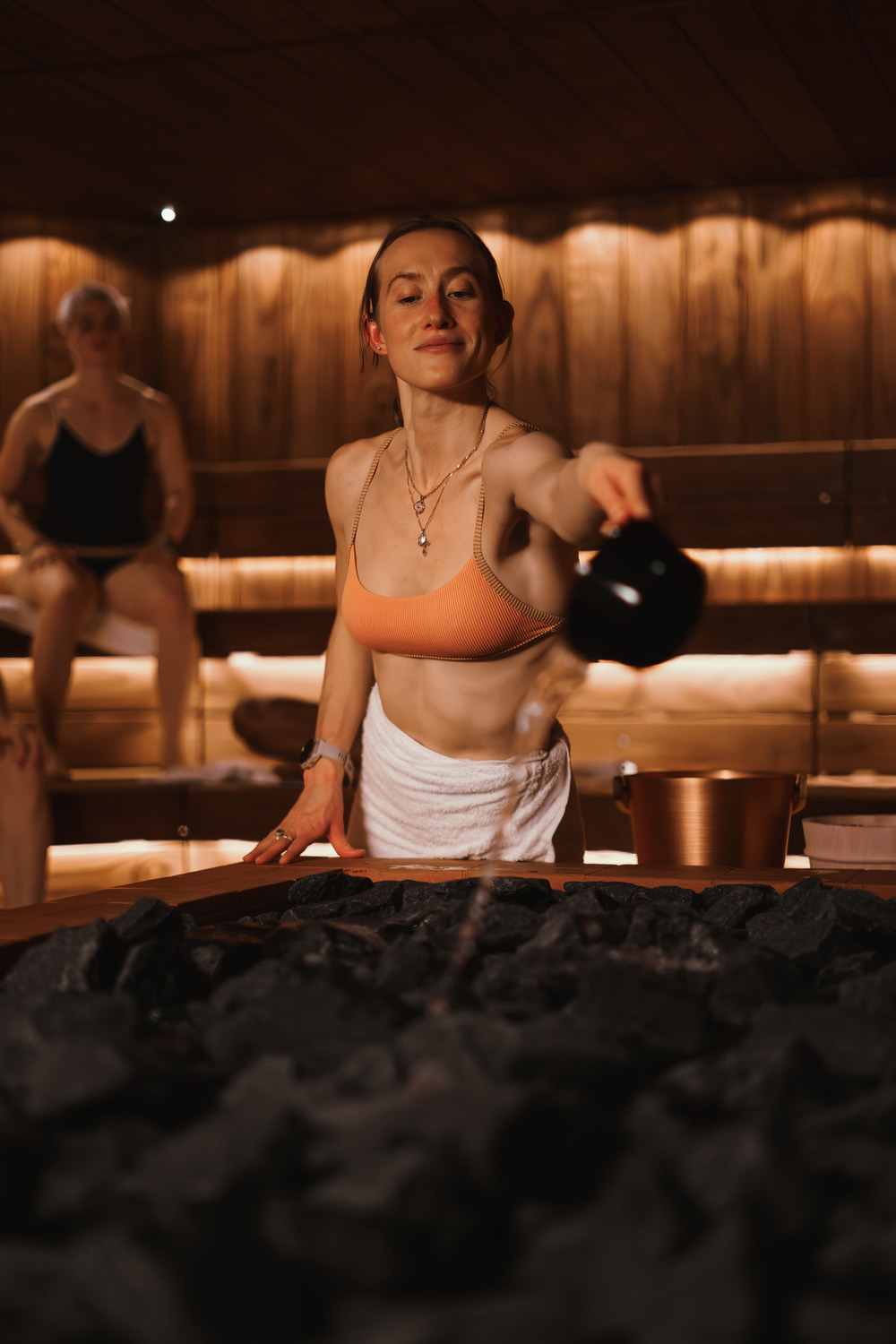
ARC co-founder Alanna Kit
What Are The Benefits Of Using A Sauna?
Not sure what the experience could offer from a wellness point of view? Well it’s much more than you might think, says Alanna:
1. Improved Cardiovascular Health
‘Regular sauna use can lower blood pressure and improve heart function, mimicking the effects of moderate exercise on the heart and blood vessels.’
2. Muscle Recovery & Pain Relief
‘Heat increases blood flow to muscles, helping reduce soreness, ease joint pain, and speed up recovery after workouts or injury.’
3. Stress Reduction
‘Sauna sessions lower cortisol (the stress hormone) and trigger the release of endorphins, leaving you feeling relaxed and uplifted.’
4. Better Sleep
‘Post-sauna relaxation and the drop in body temperature afterward can promote deeper, more restful sleep.’
5. Detoxification
‘Sweating in the sauna supports the body’s natural detox process by helping flush out toxins, heavy metals, and impurities through the skin.’
6. Enhanced Skin Health
‘Sweating clears pores, increases circulation, and supports collagen production which can improve skin tone, texture and glow over time.’
7. Immune System Boost
‘Sauna use may stimulate white blood cell production, helping the body fight off illness, and lower viral load more effectively.’
8. Increased Longevity
‘Studies (especially from Finland) suggest regular sauna use is associated with a lower risk of all-cause mortality, especially from heart disease and stroke.’
9. Improved Cognitive Function
‘Heat stress increases brain-derived neurotrophic factor (BDNF), which supports brain health, focus, and memory, potentially reducing the risk of dementia.’
10. Metabolic Boost & Calorie Burn
‘Studies have shown saunas mimic an exercise response, by elevating heart rate and enhance metabolic rate and flexibility, leading to a mild calorie burn and potentially supporting weight goals. Saunas also induce heat shock proteins, special proteins your body produces when it’s exposed to stress. These proteins protect cells from damage, prevent inflammation and support mitochondrial function.’

ARC
Are There Benefits To Using A Sauna After Working Out?
A number of fitness buffs will also tell you that using a sauna post-workout also does a world of good. ‘They’re right,’ says Alanna. ‘Using a sauna after a workout is very beneficial, and many athletes and fitness enthusiasts swear by it.
‘It enhances muscle recovery by increasing blood flow to tired muscles, helping to clear out lactic acid, which contributes to delayed onset muscle soreness,’ she explains. ‘Because the sauna lowers cortisol output, it helps recovery from the output from exercise. Post-exercise, sauna use has also been shown to elevate human growth hormone (HGH) levels – a key player in recovery, muscle building and fat metabolism. Sitting in the sauna after cardio mimics passive cardio, keeping your heart rate up and helping you adapt to heat stress, which can improve endurance over time.’
Do Different Sauna Types Offer Different Benefits?
Yes, and this all depends on the differences in temperature, humidity and how the heat is delivered to your body. ‘Dry and steam (Finnish) saunas offer more deep, intense sweating, muscle relaxation and detoxification,’ adds Alanna. ‘Steam rooms are useful for respiratory health (great for sinuses/lungs), skin hydration and gentle sweating. Infrared saunas are completely dry and offer deeper tissue penetration at lower gentle temperatures, joint pain relief, inflammation, and chronic fatigue and people sensitive to high heat (low heat, deep detox).’
Saunas vs Steam Rooms: What’s The Difference?
The two are often mixed up, but Alanna tells us that saunas and steam rooms offer different environments that cultivate different benefits. ‘Saunas have dry or low humidity, where air is heated by a stove (wood-burning, electric, or infrared),’ she explains. ‘Water may be tossed on hot rocks to briefly boost humidity (in traditional saunas), but it stays mostly dry. A key differentiator of a sauna is the use of sauna rocks to heat the room, as well as there being a wood interior.
‘Steam rooms, in contrast, are 100 percent humidity,’ she adds. ‘They use a steam generator to fill the room with moist, hot air. The interior of the room is also quite different with stones or tiles built in to handle the steam.’

Alanna leading a session in the sauna. (© Des Iles)
How Long & How Often Should You Use A Sauna?
‘Most research recommends starting low and slow from five 10 minutes and up to 30 minutes, depending on experience,’ says Alanna. ‘For general wellness and relaxation, it is recommended to undertake sauna sessions two or three times a week. For performance, heart health, or longevity, this can go up to anywhere between four and seven times a week. These numbers are based on long-term Finnish research.’
But Alanna emphasises that these numbers are very much a guideline, and that you should be listening to your body throughout the experience to determine what’s right for you. ‘Keep in mind that sauna bathing is intuitive and individual-based,’ she adds. ‘Overdoing exposure can stress your body and deplete hydration or minerals, so listen to your body and hydrate before and after with water and electrolytes.’
Are There Any Potential Risks?
While saunas are generally safe, Alanna notes that there are some potential risks to be mindful of – especially if you have certain health conditions or fail to use the space properly. ‘The key is to listen to your body, stay hydrated and know when to take it easy,’ she recommends. ‘The heat causes blood vessels to dilate, which can lower your blood pressure and may cause dizziness, so move and stand up slowly.’
She adds that, ‘for most people, saunas benefit cardiovascular health, however, if you have uncontrolled high or low blood pressure, arrhythmia or a history of heart attack or stroke, please consult a doctor before entering.’
Who Should Avoid The Practice?
‘If you are pregnant, overly dehydrated, have a critical heart condition, using medications that increase head sensitivity, or have been drinking excessive alcohol, then it’s best to avoid the sauna,’ says Alanna.
What Are Some Essentials We Should Take In With Us?
‘My sauna essentials include a sauna hat — either wool for thermoregulation or a Sweden linen or cotton hat to wet beforehand – and snowballs with essential oil blends to perform traditional Aufguss sauna rituals,’ says Alanna. ‘Aufguss rituals are German sauna traditions that include music and towel waving to move steam throughout the sauna.’
For more notes on sauna etiquette (and what you need to bring), see our guide here.
What To Expect
To get an idea of what to expect from your sauna experience, you can read our review of ARC’s Breathe & Ground class here.

